
The Enchanting Rovinj Archipelago: A Croatian Gem
Discover the Rovinj Archipelago in Croatia: a pristine collection of 14 islands offering stunning beaches, rich history, and breathtaking natural beauty.
Nestled in the Adriatic Sea, the Rovinj Archipelago is a collection of 14 picturesque islands that offer a pristine escape from the hustle and bustle of life. With its crystal-clear waters, lush greenery, and charming coastal villages, this archipelago is a paradise for nature lovers and adventure seekers alike. The islands are just a short boat ride from the historic town of Rovinj, making them easily accessible for day trips or extended stays. The Rovinj Archipelago is renowned for its beautiful beaches, perfect for sunbathing, swimming, and snorkeling. Each island has its own unique charm, from the tranquil Mlini Island to the vibrant St. Andrew's Island, which is home to a luxurious hotel and a historic Benedictine monastery. The islands are also rich in flora and fauna, providing ample opportunities for hiking, birdwatching, and exploring the natural beauty of the region. For those interested in history and culture, the Rovinj Archipelago does not disappoint. The islands have a rich maritime heritage, and visitors can explore ancient ruins, historic churches, and traditional fishing villages. The nearby town of Rovinj itself is a treasure trove of history, with its cobblestone streets, colorful buildings, and a stunning hilltop church offering panoramic views of the archipelago. Foodies will delight in the local cuisine, which features fresh seafood, truffles, and local wines. The islands are dotted with charming restaurants and cafes where you can savor these culinary delights while enjoying breathtaking views of the Adriatic Sea.
Local tips in Rovinj Archipelago
- Visit during the shoulder seasons (May-June or September-October) for fewer crowds and pleasant weather.
- Bring comfortable walking shoes for exploring the islands, as some terrain can be uneven.
- Pack snorkeling gear to fully enjoy the crystal-clear waters and vibrant marine life.
- Take a guided boat tour to learn more about the history and ecology of the archipelago.
- Try local seafood dishes and wines at the island restaurants for an authentic culinary experience.
The Enchanting Rovinj Archipelago: A Croatian Gem
Nestled in the Adriatic Sea, the Rovinj Archipelago is a collection of 14 picturesque islands that offer a pristine escape from the hustle and bustle of life. With its crystal-clear waters, lush greenery, and charming coastal villages, this archipelago is a paradise for nature lovers and adventure seekers alike. The islands are just a short boat ride from the historic town of Rovinj, making them easily accessible for day trips or extended stays. The Rovinj Archipelago is renowned for its beautiful beaches, perfect for sunbathing, swimming, and snorkeling. Each island has its own unique charm, from the tranquil Mlini Island to the vibrant St. Andrew's Island, which is home to a luxurious hotel and a historic Benedictine monastery. The islands are also rich in flora and fauna, providing ample opportunities for hiking, birdwatching, and exploring the natural beauty of the region. For those interested in history and culture, the Rovinj Archipelago does not disappoint. The islands have a rich maritime heritage, and visitors can explore ancient ruins, historic churches, and traditional fishing villages. The nearby town of Rovinj itself is a treasure trove of history, with its cobblestone streets, colorful buildings, and a stunning hilltop church offering panoramic views of the archipelago. Foodies will delight in the local cuisine, which features fresh seafood, truffles, and local wines. The islands are dotted with charming restaurants and cafes where you can savor these culinary delights while enjoying breathtaking views of the Adriatic Sea.
When is the best time to go to Rovinj Archipelago?
Iconic landmarks you can’t miss
Church of St. Euphemia
Discover the majestic Church of St. Euphemia, a Baroque masterpiece in Rovinj, offering stunning views and deep-rooted history.

Park forest Zlatni Rt
Explore Rovinj's hidden gem, Park Forest Zlatni Rt, a picturesque haven of nature, beaches, and tranquility that enchants every visitor.

Rovinj Market
Explore the heart of Rovinj at the vibrant market, where fresh produce, local crafts, and community spirit come alive in a delightful experience.

Maistra Select Amarin Resort
Discover the perfect blend of relaxation and adventure at Maistra Select Amarin Resort, a stunning hotel on the picturesque Adriatic coastline in Rovinj.

Maistra Select Villas Rubin Resort
Discover the beauty of Rovinj at Maistra Select Villas Rubin Resort, your perfect Mediterranean retreat by the Adriatic Sea.

Eden Hotel by Maistra Collection
Discover unparalleled relaxation and luxury at Eden Hotel by Maistra Collection in Rovinj, where the beauty of the Adriatic meets exquisite hospitality.
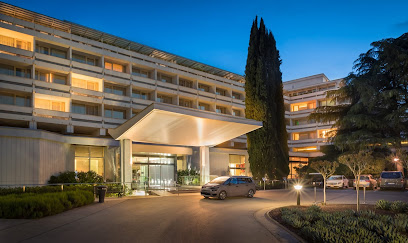
Golden Cape
Explore the serene beauty of Golden Cape, Rovinj's natural gem, featuring lush landscapes, crystal-clear waters, and endless outdoor adventures.

Balbi's Arch
Explore Balbi's Arch in Rovinj, a stunning historical landmark blending Venetian architecture with Croatian charm, perfect for every traveler's itinerary.

Plaža Balota
Experience the stunning beauty and vibrant atmosphere of Plaža Balota, a public beach in Rovinj, Croatia, perfect for relaxation and adventure.

Rovinj
Explore Rovinj: A picturesque coastal town in Croatia, blending stunning views, vibrant culture, and rich history on the Adriatic coast.

Beach Valdaliso
Discover the enchanting Beauty of Beach Valdaliso in Rovinj, Croatia - a perfect blend of relaxation, nature, and vibrant local culture.

Mulini Beach Bar
Mulini Beach Bar in Rovinj, Croatia, offers breathtaking views, exquisite cocktails, and a delightful culinary experience by the Adriatic Sea.
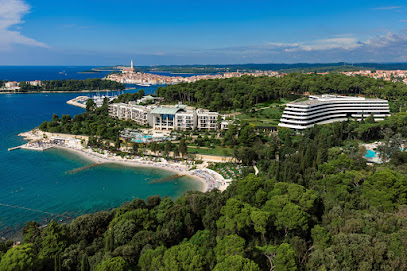
Stancija Collis
Experience the beauty of Rovinj at Stancija Collis, a charming winery offering exquisite local wines, homestay accommodations, and breathtaking vineyard views.

Monkodonja, gradina, arheološko nalazište
Discover the ancient wonders of Monkodonja, a prehistoric archaeological site in Istria, revealing the rich history and stunning landscapes of Croatia.

Rovinj Heritage Museum
Explore the rich history and artistic heritage of Rovinj at the Rovinj Heritage Museum, a cultural gem in the heart of Croatia's picturesque coastal town.

Unmissable attractions to see
Aquarium Pula
Explore the enchanting underwater world at Aquarium Pula, a historic fortress turned marine sanctuary in the heart of Croatia's vibrant coastal city.

Špilja Mramornica - Grotta del Marmo
Explore the stunning Grotta del Marmo in Brtonigla, a natural wonder showcasing breathtaking geological formations and rich Istrian heritage.

Beach Valdaliso
Experience the serene beauty of Beach Valdaliso in Rovinj, where relaxation meets adventure along the stunning Adriatic coastline.

Uvala Kale
Explore Uvala Kale, a serene public beach in Šišan, Croatia, perfect for relaxation and stunning Adriatic views.

Damjanić vina
Explore the finest Croatian wines at Damjanić Vina, a picturesque winery in Poreč offering tastings and vineyard tours amongst stunning landscapes.

Plava Laguna
Explore Plava Laguna, a breathtaking coastal gem in Poreč, Croatia, where stunning beaches meet rich cultural heritage for an unforgettable vacation experience.

TRUFFLE MUSEUM by Karlic
Explore the enchanting world of truffles at the Truffle Museum by Karlic in Buzet, where history meets culinary artistry.

Adistra
Experience the thrill of adventure sports in Rovinj at Adistra - kayak rentals, scooter services, and breathtaking coastal explorations await you.

James Joyce monument
Explore the James Joyce Monument in Pula, Croatia – a literary landmark celebrating the legacy of one of the 20th century's greatest writers.

BoatExcursionsTonka Rovinj
Discover the stunning Adriatic Sea and hidden gems of Rovinj with unforgettable boat excursions, perfect for adventurers and nature lovers alike.

Motovun Parenzana tunnel
Explore the Motovun Parenzana Tunnel, a historic railway passage offering stunning views and a glimpse into Croatia's rich heritage amidst the beautiful Istrian landscape.

IMAGINE SPIRITS distillery - TASTE&SHOP
Explore the artistry of distillation at IMAGINE SPIRITS Distillery in Vrsar, where exceptional local spirits await your discovery.

Rovinj Guide
Explore Rovinj, a charming Croatian coastal town filled with rich history, stunning architecture, and vibrant culture, perfect for your next travel adventure.
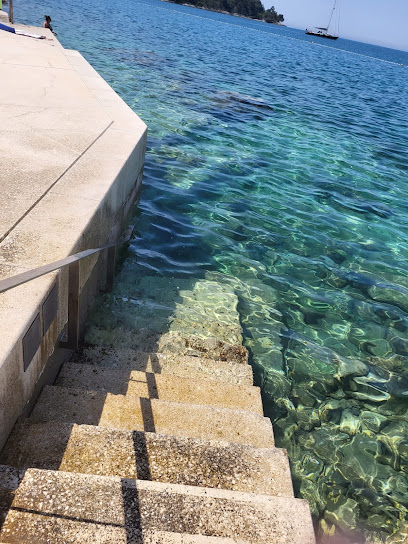
Latarnia morska Sveti Ivan na pučini
Experience the magic of the Sveti Ivan Lighthouse in Rovinj, a historic gem offering stunning views and a serene escape into nature's beauty.

JAMES JOYCE CENTAR - PULA
Discover the literary world of James Joyce at the JAMES JOYCE CENTAR in Pula, a cultural gem celebrating literature in a captivating coastal town.

Essential places to dine
Rovinj Restaurant - Puntulina
Experience exceptional seafood dining with stunning sea views at Puntulina in Rovinj - where tradition meets culinary excellence.

Restaurant Orca
Experience the best of Rovinj's seafood cuisine at Restaurant Orca – where family dining meets breathtaking views.
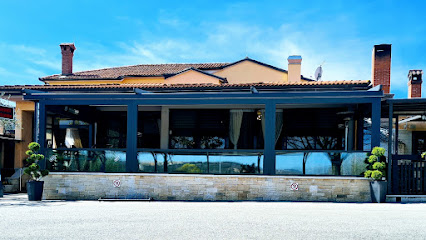
Restaurant Maslina
Experience authentic Mediterranean cuisine at Restaurant Maslina in beautiful Rovinj - where every dish tells a story.

Maestral Restaurant
Experience exquisite Mediterranean cuisine with stunning Adriatic views at Maestral Restaurant in Rovinj.

La Vela gostionica
Experience the best of Croatian cuisine at La Vela gostionica in Rovinj, offering fresh seafood and local flavors with stunning Adriatic views.

Konoba Jure
Experience authentic Croatian flavors at Konoba Jure in Rovinj - where every dish tells a story!

Restaurant Stella Di Mare
Discover authentic Croatian cuisine at Restaurant Stella Di Mare in Rovinj - where fresh seafood meets breathtaking sea views.

Da Piero
Discover culinary excellence at Da Piero in Rovinj - where Croatian traditions meet Mediterranean flair in every dish.

Balbi Restaurant
Experience authentic Croatian flavors at Balbi Restaurant in Rovinj - where culinary tradition meets modern dining elegance.

Scuba restaurant
Discover exquisite seafood and Mediterranean delights at Scuba Restaurant in Rovinj – where every meal is a celebration of local flavors.

Giannino Restaurant
Experience exquisite seafood and authentic Italian flavors at Giannino Restaurant in Rovinj - a true Mediterranean culinary treasure.

Rovinj Mali Raj
Experience authentic Croatian flavors at Rovinj Mali Raj – a charming restaurant offering fresh seafood and local delicacies in picturesque Rovinj.

Il Faro
Experience authentic Italian cuisine at Il Faro in Rovinj - where every dish tells a story and every bite brings you closer to Italy's culinary heart.

Restaurant Punta Križ
Experience authentic Croatian cuisine at Restaurant Punta Križ in Rovinj, where fresh ingredients meet traditional recipes for an unforgettable meal.

Tipico Green Garden
Experience authentic Croatian cuisine at Tipico Green Garden in Rovinj - where nature meets flavor.

Markets, malls and hidden boutiques
Retail park Rovinj
Discover the vibrant Retail Park Rovinj, a shopping paradise offering a mix of local and international brands along with delightful dining options.

Atelier Charm'
Explore the vibrant collection of local artistry at Atelier Charm', a captivating art gallery in the heart of Rovinj, Croatia.

Sirena pearl store
Explore exquisite handcrafted pearl jewelry at Sirena Pearl Store in Rovinj, the perfect destination for unique souvenirs and elegant gifts.

Kcentar Rovinj
Explore Kcentar Rovinj, a vibrant shopping mall offering a mix of local and international brands, delightful dining, and family-friendly entertainment.

Nothing to Sea
Explore Nothing to Sea, an art gallery in Rovinj showcasing exceptional ceramic art and unique gifts by talented Croatian artists.

Nonokai concept store
Explore the artistry of handmade jewelry at Nonokai Concept Store in Rovinj, where local craftsmanship meets unique design.

Croatis souvenir & gift shop
Discover unique Croatian souvenirs and gifts in Rovinj's charming shop, perfect for capturing memories of your travels.

PROSTOR Croatian Design Store
Explore the finest Croatian fashion accessories at PROSTOR in Rovinj, where local craftsmanship meets contemporary style.

Belle Epoque Multibrand store, hotel Park, Rovinj
Discover the elegance of fashion at Belle Epoque, Rovinj's premier multibrand clothing store for every occasion.

SALT Clothing
Explore SALT Clothing in Rovinj for stylish adult apparel that embodies the spirit of coastal fashion and luxury.
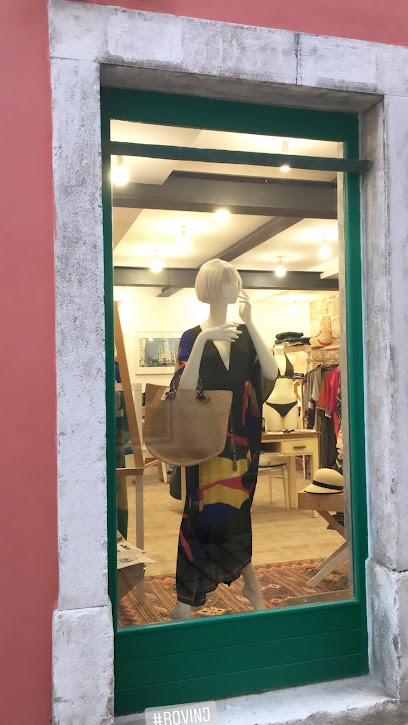
LUX
Explore LUX Souvenir Store in Rovinj for unique local gifts, handcrafted treasures, and a taste of Croatian culture to take home.

Dea Orh Concept store
Discover unique local crafts, fashion, and culinary delights at Dea Orh Concept Store in Rovinj, a gem for tourists seeking memorable souvenirs.
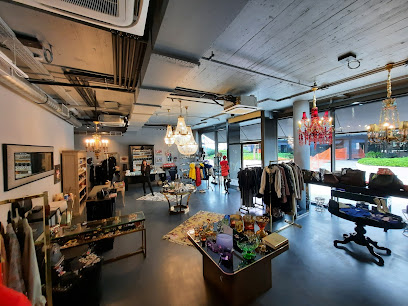
Prodavaonica „MUUUti“
Discover MUUUti in Rovinj, where unique gifts and local craftsmanship come together to create memorable souvenirs from your Croatian getaway.

GARDEROBA Concept Store ROVINJ
Explore GARDEROBA Concept Store in Rovinj for stylish clothing and accessories reflecting local craftsmanship in a luxurious setting.
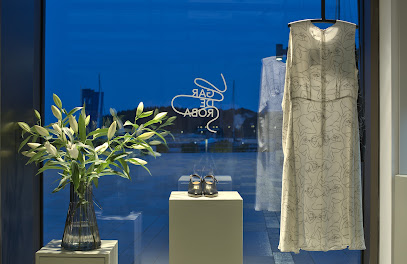
Memories of Rovinj-Gift shop
Explore Rovinj's essence with unique clothing and handmade souvenirs at Memories of Rovinj, your go-to gift shop in this picturesque coastal town.

Essential bars & hidden hideouts
Mediterraneo Cocktail Bar
Discover the exquisite mixology and stunning views at Mediterraneo Cocktail Bar in Rovinj, Croatia, where every sip feels like a vacation.
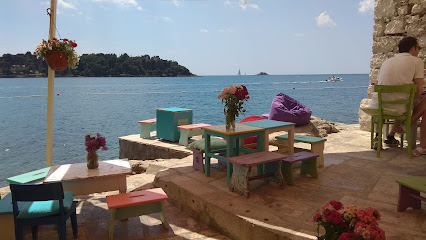
Havana Rovinj Cocktail Bar
Experience the charm of Rovinj at Havana Cocktail Bar, where exquisite cocktails meet stunning Adriatic views and vibrant atmosphere.

Beach Bar ComeBack
Experience the vibrant atmosphere and stunning seaside views at Beach Bar ComeBack in Rovinj, a perfect retreat for tourists seeking relaxation.

Beach Bar Rovinj
Discover the vibrant atmosphere of Beach Bar Rovinj, a coastal gem offering delicious cuisine, refreshing drinks, and stunning sea views.

Caffe Bar XL
Discover Caffe Bar XL in Rovinj, a vibrant bar with stunning views and a diverse drink menu, perfect for tourists looking to unwind.

Valentino Cocktail & Champagne Bar
Indulge in exquisite cocktails and fine champagne at Valentino Cocktail & Champagne Bar, Rovinj's premier nightlife destination.

Barba Danilo
Experience the essence of Croatian cuisine at Barba Danilo in Rovinj, where every dish tells a story of flavor and tradition.

Buffet Trevisol
Experience the taste of Croatia at Buffet Trevisol, a delightful wine bar and coffee shop in picturesque Rovinj, perfect for wine lovers and coffee enthusiasts.
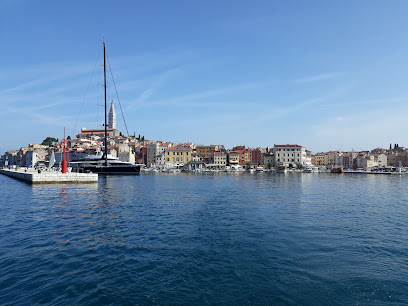
Mulini Beach Bar
Discover the perfect blend of relaxation and flavor at Mulini Beach Bar, a stunning coastal retreat in Rovinj, Croatia.

Cocktail Bar Limbo
Discover the vibrant atmosphere and exquisite cocktails at Cocktail Bar Limbo, the perfect spot for relaxation and socializing in Rovinj.

San Tommaso Gourmet and wine
Discover the exquisite flavors of Croatia at San Tommaso Gourmet and Wine, where local ingredients meet exceptional wine pairings in a charming atmosphere.

bar La'Moura
Discover the delightful Bar La'Moura in Rovinj, where Mediterranean flavors meet Croatian tradition in a vibrant atmosphere.
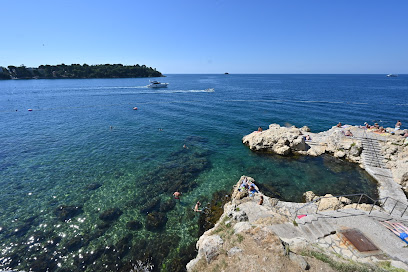
block Bar
Experience the lively atmosphere of block Bar in Rovinj, where great drinks meet a vibrant nightlife scene in a picturesque coastal town.

Weiße Bar
Discover the vibrant ambiance and exquisite drinks at Weiße Bar, the perfect spot for relaxing and socializing in Rovinj's enchanting coastal setting.

Steel Bar & Club
Discover the dynamic nightlife of Rovinj at Steel Bar & Club, a live music venue offering an unforgettable experience for nightlife enthusiasts.
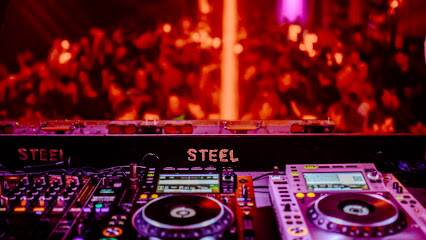
Local Phrases about Rovinj Archipelago
-
- HelloBok
[bohk] - GoodbyeDoviđenja
[dov-ee-dyen-ya] - YesDa
[dah] - NoNe
[neh] - Please/You're welcomeMolim
[moh-leem] - Thank youHvala
[hvah-lah] - Excuse me/SorryOprosti
[oh-pros-tee] - How are you?Kako si?
[kah-koh see] - Fine. And you?Dobro. A ti?
[doh-bro. ah tee] - Do you speak English?Govoriš li engleski?
[go-vo-ree-sh lee eng-les-kee] - I don't understandNe razumijem
[neh rah-zoo-mee-yem]
- HelloBok
-
- I'd like to see the menu, pleaseMogu li vidjeti jelovnik, molim?
[moh-goo lee veed-ye-tee yeh-lohv-neek, moh-leem] - I don't eat meatNe jedem meso
[neh yeh-dehm meh-soh] - Cheers!Živjeli!
[zhee-ve-lee] - I would like to pay, pleaseŽelio bih platiti, molim
[zheh-lee-oh bee pla-tee-tee, moh-leem]
- I'd like to see the menu, pleaseMogu li vidjeti jelovnik, molim?
-
- Help!Upomoć!
[oo-poh-mohch] - Go away!Odlazi!
[oh-dlah-zee] - Call the Police!Pozovite policiju!
[poh-zoh-vee-teh poh-lee-tsee-yoo] - Call a doctor!Pozovite doktora!
[poh-zoh-vee-teh dohk-toh-rah] - I'm lostIzgubljen sam
[eez-goob-lyen sahm] - I'm illBolestan sam
[boh-leh-stahn sahm]
- Help!Upomoć!
-
- I'd like to buy...Želim kupiti...
[zheh-leem koo-pee-tee] - I'm just lookingSamo gledam
[sah-moh gleh-dahm] - How much is it?Koliko košta?
[koh-lee-koh kos-tah] - That's too expensiveTo je pre skupo
[toh yeh preh skoo-poh] - Can you lower the price?Možete li spustiti cijenu?
[moh-zheh-teh lee spoos-tee-tee tsee-yeh-noo]
- I'd like to buy...Želim kupiti...
-
- What time is it?Koliko je sati?
[koh-lee-koh yeh sah-tee] - It's one o'clockJedan je sat
[yeh-dahn yeh saht] - Half past (10)Pola (deset)
[poh-lah (deh-set)] - MorningJutro
[yoo-troh] - AfternoonPopodne
[poh-pohd-neh] - EveningVečer
[veh-chehr] - YesterdayJučer
[yoo-chehr] - TodayDanas
[dah-nahs] - TomorrowSutra
[soo-trah] - 1Jedan
[yeh-dahn] - 2Dva
[dvah] - 3Tri
[tree] - 4Četiri
[cheh-tee-ree] - 5Pet
[peht] - 6Šest
[shehst] - 7Sedam
[seh-dahm] - 8Osam
[oh-sahm] - 9Devet
[deh-veht] - 10Deset
[deh-set]
- What time is it?Koliko je sati?
-
- Where's a/the...?Gdje je...?
[gdyeh yeh] - What's the address?Koja je adresa?
[koh-yah yeh ah-deh-sah] - Can you show me (on the map)?Možete li mi pokazati (na karti)?
[moh-zheh-teh lee mee poh-kah-zah-tee (nah kahr-tee)] - When's the next (bus)?Kada je sljedeći (autobus)?
[kah-dah yeh sleh-deh-chee (ow-toh-boos)] - A ticket (to ....)Jedna karta (za ....)
[yehd-nah kahr-tah (zah)]
- Where's a/the...?Gdje je...?
History of Rovinj Archipelago
-
The Rovinj Archipelago, a cluster of 19 islands off the coast of Croatia, has been inhabited since prehistoric times. Archaeological evidence, including tools and pottery shards, suggests that the area was settled by the Illyrians, an ancient Indo-European people who lived in the western Balkans. These early inhabitants utilized the rich maritime resources and fertile land to establish thriving communities.
-
During the Roman era, the Rovinj Archipelago became a significant part of the Empire's Adriatic territories. The town of Rovinj, located on the mainland, was known as Arupinium. The Romans built roads, villas, and fortifications, leaving a lasting architectural legacy. Maritime trade flourished, and the region became a key point for the transport of goods across the Adriatic Sea. Roman artifacts, such as coins and amphorae, have been discovered on various islands, attesting to the area's historical importance.
-
The medieval period saw the Rovinj Archipelago become a vital part of the Byzantine Empire and later the Republic of Venice. During the Byzantine rule, the area was fortified to protect against invasions. With the rise of Venetian influence in the 13th century, Rovinj and its surrounding islands became a bustling maritime hub. The Venetians fortified the town, built churches, and established trade routes. The Church of St. Euphemia, built in the 10th century and reconstructed in the 18th century, stands as a testament to this era.
-
In the early 19th century, the Rovinj Archipelago came under the control of the French Empire during the Napoleonic Wars. The French administration brought reforms and modernized the infrastructure, but their rule was short-lived. After the fall of Napoleon, the region was incorporated into the Austrian Empire. The Napoleonic influence is still visible in some architectural elements and the layout of the town.
-
Under Austro-Hungarian rule, from 1815 to 1918, Rovinj and its archipelago experienced significant economic growth. The Austrians developed the port facilities and promoted the fishing and shipbuilding industries. The town's picturesque streets and Austro-Hungarian architecture from this period can still be seen today. The archipelago became a popular destination for the Austro-Hungarian elite, contributing to its reputation as a tourist destination.
-
Following World War I, Rovinj and its archipelago became part of Italy, and after World War II, it was incorporated into Yugoslavia. The post-war period brought industrialization and increased tourism. The Yugoslav era saw the development of infrastructure and cultural facilities, making Rovinj a prominent tourist destination. Despite political changes, the archipelago maintained its cultural heritage and natural beauty.
-
Since the dissolution of Yugoslavia in the early 1990s, Rovinj and its archipelago have been part of independent Croatia. Today, the area is a thriving tourist destination known for its stunning landscapes, historic architecture, and vibrant cultural scene. The islands are protected as part of Croatia's natural heritage, ensuring that their beauty and historical significance are preserved for future generations.
Rovinj Archipelago Essentials
-
Rovinj Archipelago is located off the coast of the Istrian Peninsula in Croatia. The nearest major airport is Pula Airport, which is about 40 kilometers from Rovinj. From the airport, you can take a taxi, airport shuttle, or rent a car to reach Rovinj. Additionally, ferries operate from Venice, Italy directly to Rovinj during the tourist season. Bus services from major Croatian cities like Zagreb, Rijeka, and Pula are also available.
-
Rovinj itself is a pedestrian-friendly town, and many of its attractions are best explored on foot. For island hopping within the archipelago, local boat services and water taxis are readily available. Renting a bike or scooter is also a popular option for getting around. For those looking to explore the broader Istrian Peninsula, renting a car can be convenient. Public buses connect Rovinj with other towns and cities in Istria.
-
The official currency in Croatia is the Croatian Kuna (HRK). Credit cards are widely accepted in hotels, restaurants, and shops in Rovinj. However, it's advisable to carry some cash, especially when traveling to smaller islands or remote areas. ATMs are widely available in Rovinj, and currency exchange services can be found in banks and exchange offices.
-
Rovinj Archipelago is generally a safe destination for tourists. However, as with any travel destination, take standard precautions such as avoiding poorly lit areas at night and keeping an eye on your belongings in crowded places. There are no specific high-crime areas targeting tourists, but always remain vigilant and aware of your surroundings.
-
In case of emergency, dial 112 for immediate assistance. Rovinj has a local police station and medical facilities. It's highly recommended to have travel insurance that covers medical emergencies. For minor health issues, pharmacies are available in Rovinj where you can purchase over-the-counter medications.
-
Fashion: Do dress modestly, especially when visiting religious sites. Avoid wearing beachwear in town. Religion: Do respect local customs and traditions. Always be quiet and respectful when visiting churches and religious sites. Public Transport: Do purchase your bus or ferry ticket in advance. Don’t be loud or disruptive on public transport. Greetings: Do greet people with a polite 'Dobar dan' (Good day) or a handshake. Eating & Drinking: Do try local delicacies and accept food offerings graciously. Don’t refuse hospitality, as it is considered impolite.
-
To experience Rovinj Archipelago like a local, visit the local markets where fresh produce and traditional Croatian goods are sold. Engage with locals, who are often friendly and willing to share stories about the area's history and culture. Don’t miss visiting the main island of St. Andrew, known for its natural beauty and historical sites. For a unique experience, take part in local festivals and events, which provide a glimpse into the traditional way of life.
Trending Landmarks in Rovinj Archipelago
-
Church of St. Euphemia
-
Park forest Zlatni Rt
-
Rovinj Market
-
Maistra Select Amarin Resort
-
Maistra Select Villas Rubin Resort
-
Eden Hotel by Maistra Collection
-
Golden Cape
-
Balbi's Arch
-
Plaža Balota
-
Rovinj
-
Beach Valdaliso
-
Mulini Beach Bar
-
Stancija Collis
-
Monkodonja, gradina, arheološko nalazište
-
Rovinj Heritage Museum
Nearby Cities to Rovinj Archipelago
-
Things To Do in Pula
-
Things To Do in Portorož
-
Things To Do in Piran
-
Things To Do in Izola
-
Things To Do in Koper
-
Things To Do in Opatija
-
Things To Do in Trieste
-
Things To Do in Sežana
-
Things To Do in Postojna
-
Things To Do in Nova Gorica
-
Things To Do in Venice
-
Things To Do in Ljubljana
-
Things To Do in Škofja Loka
-
Things To Do in Ravenna
-
Things To Do in Bohinj













